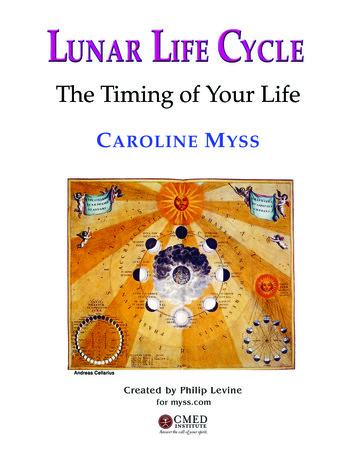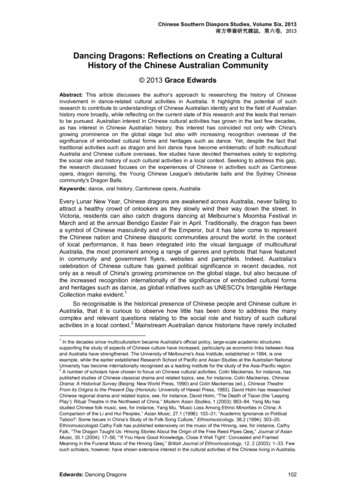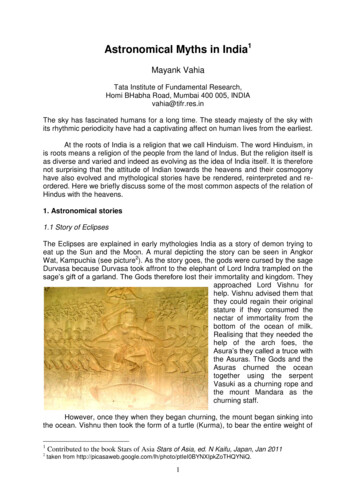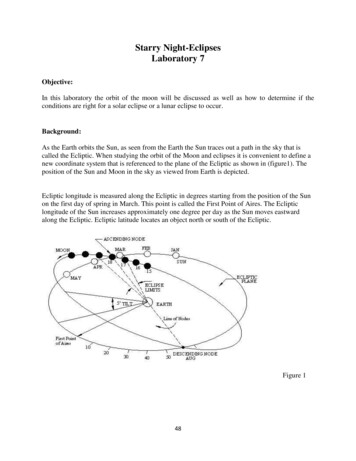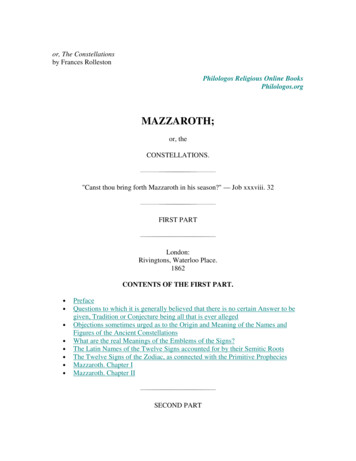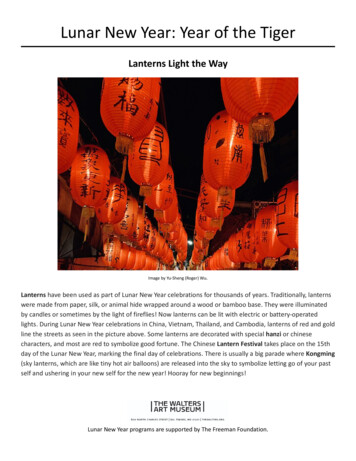
Transcription
Lunar New Year: Year of the TigerLanterns Light the WayImage by Yu-Sheng (Roger) Wu.Lanterns have been used as part of Lunar New Year celebrations for thousands of years. Traditionally, lanternswere made from paper, silk, or animal hide wrapped around a wood or bamboo base. They were illuminatedby candles or sometimes by the light of fireflies! Now lanterns can be lit with electric or battery-operatedlights. During Lunar New Year celebrations in China, Vietnam, Thailand, and Cambodia, lanterns of red and goldline the streets as seen in the picture above. Some lanterns are decorated with special hanzi or chinesecharacters, and most are red to symbolize good fortune. The Chinese Lantern Festival takes place on the 15thday of the Lunar New Year, marking the final day of celebrations. There is usually a big parade where Kongming(sky lanterns, which are like tiny hot air balloons) are released into the sky to symbolize letting go of your pastself and ushering in your new self for the new year! Hooray for new beginnings!Lunar New Year programs are supported by The Freeman Foundation.
Art Activity: Paper LanternMaterials: Two (2) sheets of construction paper (traditional colors are yellow and red) Tape or glue Scissors Markers Stapler (optional) Ruler (optional)Steps:1. Start by collecting your materials. If you don’t have something on the list, use your creativity to find asubstitute.2. Fold the sheet of red construction paper in half lengthwise.3. Cut slits every half inch along the fold. Stop cutting about half an inch from the open edge of the paper(see images below).4. Cut the last strip of paper off completely. This will become your lantern handle.5. Fold your yellow paper lengthwise into three sections.6. Use markers to decorate the top two sections of your yellow paper. These designs will show inside thelantern.7. Use the scissors to cut slits along the bottom section of the yellow paper to create fringe.Lunar New Year programs are supported by The Freeman Foundation.
8. Glue the top edge of the red paper to the top of the yellow paper so that the slits are vertically aligned.9. Glue the bottom edge of the red paper to the yellow paper, just above the start of the fringe.10. Round your paper into a cylinder, keeping the red part on top and sliding the edge of the exposedyellow paper under. Staple, tape, or glue the edges together.Lunar New Year programs are supported by The Freeman Foundation.
11. Take the strip of red construction paper you cut in step 4 and staple, tape, or glue it to the top of yourlantern to create a handle.12. Hang your lantern in a special place. Make more lanterns to string around your home to celebrate thenew year!Lunar New Year programs are supported by The Freeman Foundation.
Collection ConnectionOctagonal LanternOctagonal Lantern, China, 1662‒1722. Acquired by William T. Walters, acc. no. 49.2829.This Chinese ceramic was made to look like a traditional paper lantern. It is hollow inside, the walls are thin,and it is open at the top and bottom so that it could actually function as a lantern. It is decorated with picturesof the eight Daoist Immortals, or xian, crossing the ocean. Daoism is a Chinese philosophy based on thewritings of the ancient philosopher Laozi. A central tenet of Daoism is the belief that adhering to certainpractices, as the eight Immortals did, can lead to a long life or even immortality. The Immortals symbolize theability to transcend, or go beyond, the limitations of ordinary human life. They are considered to be signs ofprosperity and longevity—good omens for a brand new year! What good events do you hope for in the newyear?Lunar New Year programs are supported by The Freeman Foundation.
Lunar New Year: Year of the Tiger Lanterns Light the Way Image by Yu-Sheng (Roger) Wu. Lanternshave been used as part of Lunar New Yearcelebrations for thousands of years. Traditionally, lanterns were made from paper, silk, or animal hide wrapped around a wood or bamboo base. They were illum

